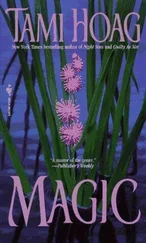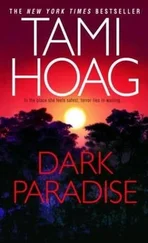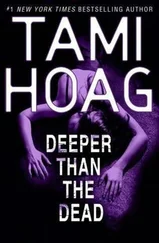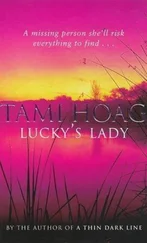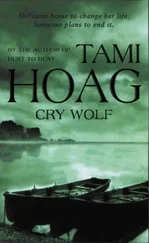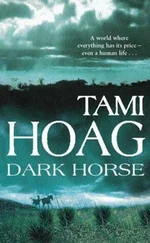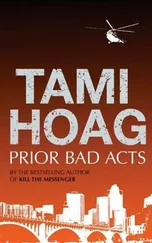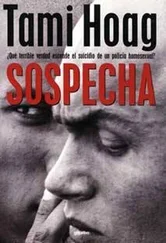Also by Tami Hoag
Deeper Than the Dead
The Alibi Man
Prior Bad Acts
Kill the Messenger
Dark Horse
Dust to Dust
Ashes to Ashes
A Thin Dark Line
Guilty as Sin
Night Sins
Dark Paradise
Cry Wolf
Still Waters
Lucky’s Lady
Sarah’s Sin
Magic

Copyright © 2011 by Indelible Ink, Inc.
All rights reserved
With thanks and appreciation to Brian Tart, Ben Sevier, and all the team at Dutton.
Thanks for understanding what I do and how I do it.
AUTHOR’S NOTE
1986. Ronald Reagan was in his second term as president. On January 28, the space shuttle Challenger disintegrated seventy-three seconds after its launch, killing all seven astronauts aboard, including teacher Christa McAuliffe. Out of Africa won the Oscar for best picture. A mishandled safety test at the Chernobyl Nuclear Power Plant in the Ukranian SSR, Soviet Union, killed more than 4,000 people and caused 350,000 to be forcibly resettled away from the area. The New York Mets won the World Series, defeating the Boston Red Sox in seven games. The Bangles had a number one worldwide hit with “Walk Like an Egyptian.”
It was a year of big hair, big shoulder pads, and spandex.
In 1986, DNA science was still in its infancy with regards to law enforcement and had yet to be presented as evidence in a court of law. Investigators with foresight were holding on to evidence obtained at crime scenes and from crime victims, waiting for the science to advance enough to help them convict killers and rapists.
In 1986, California’s organization for Court Appointed Special Advocates—CalCASA—was still a year away. Local CASA programs (which provide advocates for children to assist them in dealing with the courts and foster care system) existed but were still relatively few and far between.
In 1986, AIDS was only just becoming widely known as a killer of near epidemic proportions worldwide, and the gay community was under fire. In 1986, it was still considered scandalous for single women to become pregnant and to raise the child on their own. My, how times have changed.
At the end of 1986, I made the decision to put my best effort into becoming a published author the following year. My first book would be published in 1988, and I would purchase my first desktop computer—with black-and-white monitor—with my advance from that book.
When I sat down to the first book of this series, Deeper Than the Dead, it never occurred to me that I would be transporting readers to a simpler time. Nineteen eighty-five didn’t seem all that long ago to me. Then, one night at work an infomercial came on my television—for Greatest Hits of the Eighties . As I listened to the sampling of songs, smiling at the memories they evoked, I suddenly came to a shocking realization: Oh, my God, I’ve become nostalgic! I’m old !!
Once I finally accepted that stunning truth, I embraced my trip back in time while also gaining a renewed appreciation for the technology available to law enforcement—and to the rest of us—today.
1
November 1986
The house stood by itself back off the road in a field of dried golden grass, half hidden by spreading oaks. An amalgam of styles—part Spanish, part ranch—the once-white stucco building was weathered in a way that made it seem a part of the natural surroundings, as if it had grown up out of the earth and belonged there as much as any of the hundred-year-old trees.
The scene was a plein air painting, soft and impressionistic: the golden grass, the dark trees, bruise-purple mountains in the background, and the whisper-blue sky strewn with long, thin, pink-tinted clouds; the small white house with its old tile roof. On the other side of the mountains the sun had begun its descent toward the ocean. Here, the day seemed to have paused to admire its own perfection. Stillness held the landscape enraptured.
Nothing gave away a hint of what lay within the house.
The driveway was a path of dirt and crushed rock with grass and weeds sprouted up the middle like the mane of a wild pony. Falling-down fences the color of driftwood created the lane between two overgrown pastures that had once been home to cattle and horses.
A vintage Woody station wagon well past its glory days was parked at a casual angle near an open shed full of rusted farm equipment. An old Radio Flyer red wagon had been abandoned near the front porch with an orange tabby cat sitting in it, waiting for a ride. On the porch two kittens played peekaboo among overgrown pots of parched geraniums and kitchen herbs. One propped herself up on the screen door and peered into the house, then squeaked and leapt and dashed away, tail straight up in the air.
Inside the house nothing moved but flies.
A horrible still life had been staged on the Saltillo tile kitchen floor.
A woman lay dead, her hair spreading out around her head like a dark cloud. Her skin was the color of milk. Her lips had been painted as red as a rose—as red as her blood must have been as it drained from the wounds carved into her flesh.
She lay discarded like a life-size broken doll—made up, torn up, and cast aside, her brown eyes cloudy and lifeless.
Beside her lay a smaller doll—her child—head resting on her shoulder, face streaked with the last of her mother’s life’s blood.
The flies buzzed. The wall clock ticked above the sink.
The telephone receiver dangled near the floor, stenciled with small bloody fingerprints. The last words spoken into it were a whisper still hanging in the air: “ My daddy hurt my mommy ...”
2
“The victim is Marissa Fordham, twenty-eight, single mom. An artist.”
Sheriff’s detective Tony Mendez rattled off the facts as if unaffected by what he had seen inside the house. Nothing could have been further from the truth. In fact, shortly after he arrived at the scene, he had had to excuse himself from the kitchen to vomit under a tree in the backyard.
He had been second on the scene, the property being on his side of town. The first responder—a young deputy—had puked under the same tree. Mendez had never seen so much blood. The smell of it was still like a fist lodged at the back of his throat. Every time he closed his eyes he saw the victims in freeze-frame shots from a horror movie.
His stomach rolled.
“You said there were two vics.”
Vince Leone, forty-nine, former special agent with the FBI’s legendary Behavioral Sciences Unit, former Chicago homicide detective. Leone had been his mentor during his course at the FBI’s National Academy—a training program for law enforcement agencies around the country and around the globe. In fact, Leone had come to Oak Knoll more than a year past in part to work a serial-killer case, in part to try to recruit Mendez to the Bureau.
The case was ongoing. Neither of them had left.
Leone had just arrived on the scene. They drifted slowly away from his car toward the house, both of them taking in the cool, eucalyptus-scented air.
“The woman’s four-year-old daughter,” Mendez said. “She had a faint pulse. She’s on her way to the hospital. I wouldn’t expect her to make it.”
Leone muttered an expletive under his breath.
He was an imposing man. Six foot three with a mane of wavy salt-and-pepper hair. A thick mustache drew the eye away from the small, shiny scar marking the entrance wound of the bullet that should have ended his life. Instead, the thing remained in his head, inoperable because of its precarious location.
Читать дальше



